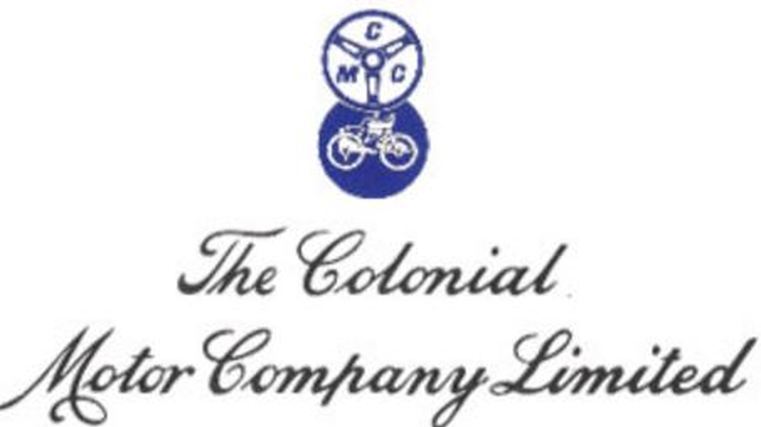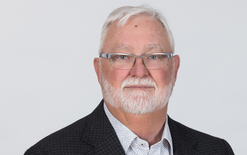Colonial Motors' 100th report

The Colonial Motor Company (CMC) has presented its 100th annual report for the year to June 30, 2018, with chief executive Graeme Gibbons saying it has benefitted from the strength of the New Zealand economy over the past nine years, which has fuelled their growth.
“The light end of the market – passenger cars, SUVs and light commercials – have slowed the rate of growth this year,” he says. “It’s now down to around 2.5 per cent year over year compared to 14 per cent plus a year ago.”
However, the extra-heavy truck part of the market, even with smaller in numbers, has continued to grow at a much stronger rate, which is reflected in Southpac Trucks’ contribution to CMC’s results this year.
Gibbons adds the vehicle industry continues to be intensely competitive with every brand pushing for every sale and each point of market share. Ford’s light commercials with the Ranger and new Transit Custom, and Mazda with its strong SUVs, continue to excel.
“The sheer volume of vehicles coming into the country, both new and used imports, continues to require more capacity than the domestic vehicle distribution system can cater for. It leads to frustrating delays being able to deliver vehicles to customers.
“In our car dealerships, focus has been on adding capacity, primarily in-service departments with more technicians and bays for retail service and vehicle preparation. Constraints for sales are more related to the capacity, enthusiasm and ability of our dealership sales teams and the supply chain for vehicles.
“It has never been truer than now that the tried and proven process of identifying and training young people is a cornerstone of our business.
"A qualified technician or parts person is highly skilled and has a world of opportunity in front of them. This happens at every dealership on a continuous basis.
"The current nationwide “got a trade, got it made” campaign covers this training in our industry through MITO and polytechnics.
Meanwhile, CMC’s new Queenstown facility for Macaulay Motors – Ford and Mazda – will be twice the area of the current operation and is expected to be completed by year-end. It has taken around two-and-a-half years from signing the agreement to purchasing the land.
In Christchurch, an agreement was finally reached with Crown authorities in April on a perpetual easement for the mid-block “greenway” to go east-west through the centre of Team Hutchinson Ford.
“This process began in mid-2012 when the South Frame was first announced as part of the regeneration plan,” adds Gibbons. “We aim to complete the project with new dealership brand presentation by the end of 2019.”
In Wellington, the new retail-service facility in upper Taranaki Street is nearing completion, and Capital City Ford & Mazda expects to be fully operational there this year.
Two new leased “brand hubs” on the waterfront are being fitted out. The current main dealership facility is occupied on a short-term lease basis. “We have acquired a number of smaller properties in High Street around the Stevens Motors facility.”
At South Auckland Motors, the new leased purpose-built high-profile Takanini service facility for Ford and Mazda was opened late in 2017. “We are continuing to look toward medium-term growth opportunities to match the expansion of Auckland developments in Drury and Pukekohe.”
Future of the motor vehicle
Ownership or access to a motor vehicle in New Zealand is a practical reality of everyday life as well as a personal choice. However, the demand for park and ride as a complementary part of public transport in spread-out cities is a reminder of that choice, says Gibbons.
“Many of us might consider we have too many vehicles on the roads, but to reduce this requires a combination of significantly improved public transport systems in Auckland and hard choices. If we are serious about reducing our total emission levels, then fewer vehicles – with the most up-to-date emission levels and latest safety features – is part of the solution.
“Taking older, less safe, less economical, higher-emission vehicles off our roads is hard enough. Reducing the age of our fleet by restricting the importation of older used vehicles is similarly politically difficult. Politically it is simpler to talk about the future nirvana of driverless autonomous electrical vehicles [EVs]. The biggest roadblock restricting the uptake of EV by anyone other than early adopters and corporate owners are price and range.
”For all countries, methods of encouraging change are challenging because someone – the taxpayer, other vehicle owners or road users – have to pay for any subsidies or tax breaks that might be granted to offset the substantial price differential between conventional and electric technologies.
“Our dealerships are dependent on our brand franchises to bring these new technology products to the market when they are ready. New Zealand, with its high level of renewable electricity generation, is ideally placed to benefit when the product and price are right.”
Finance reports
CMC’s revenue for the year ending June 30 was $904 million – a six per cent increase on the previous year’s $854.8m reflecting the continued strength of the vehicle market and, in particular, heavy trucks. Trading profit after tax for the year was $24.7m, up 12 per cent on last year’s $22m.
Trading profit after tax, which included a number of non-trading items such as asset revaluations and related deferred tax, was up 15 per cent on last year to $27.1m. Total assets rose to $389.4m.
The revaluation of the group’s property brought about an increase in the revaluation reserve of $5.4m. Capital expenditure, mainly incurred to acquire properties In Queenstown and Lower Hutt, contributed to the rise in property values. At balance date, shareholders’ equity was $196.9m with the same period in 2017 totalling $180.9m.





